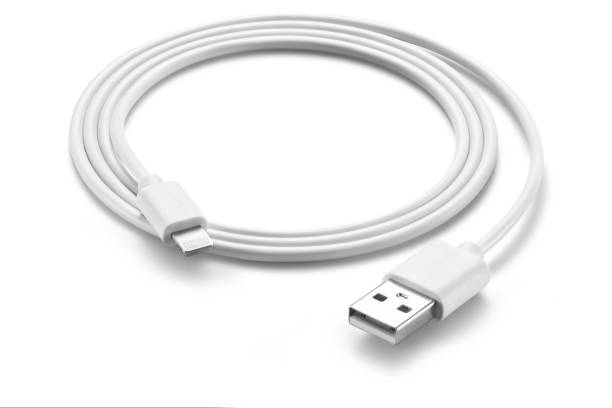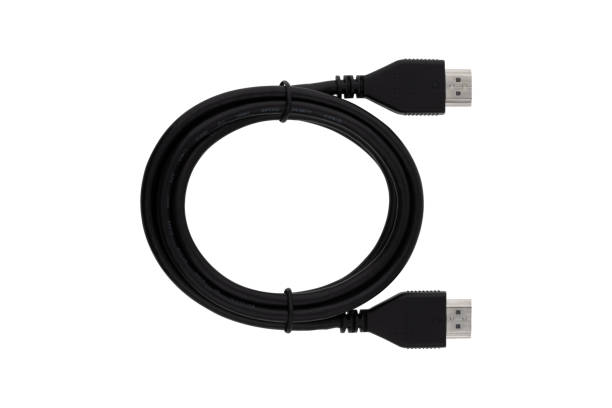What is the Difference between USB and HDMI Cables?
Two common cables you may encounter in your life are USB (Universal Serial Bus) and HDMI (High Definition Multimedia Interface) cables. We’ll break down the key differences between USB and HDMI cables to help you understand what each does and determine which one is best for your needs.
What is a USB Cable?
A USB cable, short for Universal Serial Bus cable, is a common type of connector used to transfer data and provide power between electronic devices. It serves as a versatile link between various gadgets, enabling seamless communication and power transfer.

Developed as a standard interface in the mid-1990s, USB cables have undergone several iterations, each offering improved speed and functionality. USB cables come in different shapes and sizes, with USB-A, USB-B, USB-C, and micro USB being the most common types. Learn about the different USB types, USB ports, and USB connectors, understand the basics of USB technology, and see how each type enhances device connectivity and power transfer.
What is an HDMI Cable?
An HDMI cable, or High-Definition Multimedia Interface cable, is a specialized connector designed primarily for transmitting high-definition audio and video signals between electronic devices. It facilitates the seamless transfer of audiovisual content from sources such as Blu-ray players, game consoles, set-top boxes, and streaming devices to TVs, monitors, and projectors.

Developed in the early 2000s, HDMI cables have evolved to support multiple standards, including HDMI 1.4, HDMI 2.0, and HDMI 2.1, each of which offers a different level of performance in terms of resolution support, refresh rate, HDR (High Dynamic Range), and ARC (Advanced Resonance Control).
Key Differences between USB and HDMI Cables
While both USB and HDMI cables serve as conduits for data and signal transmission, several key differences set them apart:
| Aspect | USB Cables | HDMI Cables |
| Functionality | Primarily for data transfer, device charging, and peripheral connectivity | Specialize in transmitting high-definition audio and video signals between devices |
| Connector Types | USB-A, USB-B, USB-C, micro USB | Standardized rectangular connector |
| Usage Scenarios | Connecting peripherals like keyboards, mice, printers, and external drives to computers, laptops, and smartphones. Also used for device charging and data transfer | Linking devices such as Blu-ray players, gaming consoles, set-top boxes, and streaming devices to TVs, monitors, and projectors |
| Data Transmission Rates | Varies based on USB standard (e.g., USB 2.0, USB 3.0, USB 3.1, USB 3.2), with higher versions providing faster transfer rates | Transmit uncompressed audio and video signals with minimal latency, ensuring high-quality audiovisual experiences without loss or interference |
Functionality
- USB Cables: Primarily used for data transfer, device charging, and peripheral connectivity.
- HDMI Cables: Specialize in transmitting high-definition audio and video signals between devices.
Connector Types
- USB Cables: Come in various shapes and sizes, including USB-A, USB-B, USB-C, and micro USB, each catering to specific device connections.
- HDMI Cables: Feature a standardized rectangular connector, ensuring compatibility across HDMI-enabled devices.
Usage Scenarios
- USB Cables: Commonly used for connecting peripherals like keyboards, mice, printers, and external drives to computers, laptops, and smartphones. Also used for device charging and data transfer.
- HDMI Cables: Excel in home entertainment setups, linking devices such as Blu-ray players, gaming consoles, set-top boxes, and streaming devices to TVs, monitors, and projectors.
Data Transmission Rates
- USB Cables: Offer different data transfer speeds depending on the USB standard, ranging from USB 2.0 to USB 3.2 Gen 2×2, with higher versions providing faster transfer rates.
- HDMI Cables: Transmit uncompressed audio and video signals with minimal latency, ensuring high-quality audiovisual experiences without loss or interference.
Choosing the Right Cable for Your Needs
The following points need to be carefully considered to help select the right cable for your needs:
- Identify Your Requirements: Start by identifying your specific requirements and use cases. Determine whether you need a cable for data transfer, device charging, audiovisual transmission, or a combination of these functions.
- Consider Compatibility: Check the compatibility of your devices with different cable types. Ensure that both the source and destination devices support the same standards and connector types to ensure seamless connectivity.
- Assess Data Transfer Needs: Evaluate your data transfer needs and requirements. If you frequently transfer large files or need high-speed data transfer, opt for a cable with faster transfer rates and higher bandwidth capabilities.
- Evaluate Audiovisual Needs: If you’re setting up a home entertainment system or gaming setup, prioritize cables that offer high-definition audiovisual transmission capabilities. Consider factors like resolution support, refresh rates, and audio formats supported by the cable.
- Factor in Convenience and Versatility: Consider the convenience and versatility offered by different cable types. USB cables, for example, are versatile and widely compatible with a wide range of devices, making them suitable for various tasks. HDMI cables, on the other hand, excel in delivering high-definition audiovisual experiences but may have limited compatibility outside of multimedia applications.
- Budget Considerations: Take into account your budget constraints when choosing a cable. USB cables are generally more affordable and offer a cost-effective solution for everyday connectivity needs. HDMI cables may be slightly more expensive, especially for high-speed or high-quality versions, but offer superior audiovisual performance for entertainment purposes.
- Future-Proofing: Consider future-proofing your setup by opting for cables that support the latest standards and technologies. Look for cables with backward compatibility and support for future advancements to ensure that your setup remains relevant and compatible with upcoming devices and technologies.
With these factors in mind, you can weigh your priorities and choose the cable that best meets your needs and requirements. Whether your priority is speed, audiovisual quality, versatility, or budget, there is a cable solution to meet your specific needs.
FAQs
Can I use a USB cable instead of an HDMI cable?
No, USB and HDMI cables serve different purposes and are not interchangeable. USB cables are primarily used for data transfer and device charging, while HDMI cables specialize in transmitting high-definition audio and video signals.
What is the maximum length of USB and HDMI cables?
USB cables typically have a maximum length of around 5 meters (16 feet) for standard USB connections. HDMI cables, on the other hand, can vary in length but generally have a maximum recommended length of about 15 meters (50 feet) for reliable signal transmission.
Can I connect multiple devices using a single USB or HDMI cable?
USB cables are designed for point-to-point connections between devices, so you cannot connect multiple devices using a single USB cable. However, USB hubs allow you to expand the number of available USB ports on a device. HDMI cables, on the other hand, support daisy-chaining and can be used to connect multiple devices in a chain, although signal quality may degrade with each additional device.
Do USB and HDMI cables support audio transmission?
USB cables primarily support data transfer and device charging and do not typically transmit audio signals. HDMI cables, on the other hand, support both high-definition audio and video transmission, making them ideal for connecting audiovisual devices like TVs, monitors, and projectors.
Are USB and HDMI cables backward compatible?
USB cables are generally backward compatible, meaning that newer USB devices can connect to older USB ports, albeit at lower speeds.HDMI cables may also be backward compatible to some extent, but newer HDMI standards may not be fully compatible with older HDMI ports and devices, potentially limiting available features or functionality.
Can I extend the length of the USB and HDMI cables?
Yes, you can extend the length of both USB and HDMI cables using extension cables or signal boosters. However, it’s essential to use high-quality extension cables and follow manufacturer recommendations to ensure reliable signal transmission and avoid signal degradation or loss.
Conclusion
In summary, USB and HDMI cables each have unique roles in connectivity and multimedia. USB cables are great for transferring data and charging devices, while HDMI cables excel in delivering high-quality audio and video for immersive entertainment. Knowing these differences helps you choose the right cable for your needs, whether it’s enhancing productivity with USB or enjoying multimedia experiences with HDMI. Both cables are essential in today’s interconnected world.
At the end of your exploration into USB and HDMI cables, why not ensure your printing setups are just as efficient? Visit YB Toner to explore our wide range of Brother ink cartridges. Perfect your printing with cartridges designed for consistency and quality. Shop now and experience the best in printing technology!

